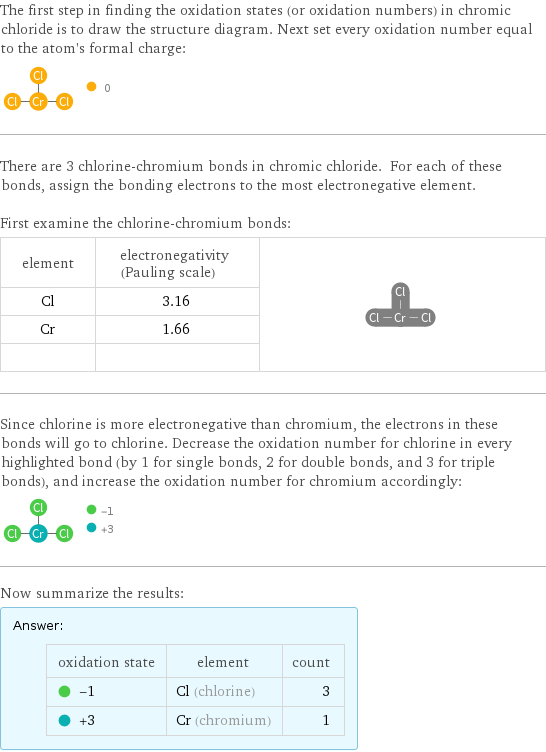Input interpretation

chromic chloride | elemental oxidation states
Result

The first step in finding the oxidation states (or oxidation numbers) in chromic chloride is to draw the structure diagram. Next set every oxidation number equal to the atom's formal charge: There are 3 chlorine-chromium bonds in chromic chloride. For each of these bonds, assign the bonding electrons to the most electronegative element. First examine the chlorine-chromium bonds: element | electronegativity (Pauling scale) | Cl | 3.16 | Cr | 1.66 | | | Since chlorine is more electronegative than chromium, the electrons in these bonds will go to chlorine. Decrease the oxidation number for chlorine in every highlighted bond (by 1 for single bonds, 2 for double bonds, and 3 for triple bonds), and increase the oxidation number for chromium accordingly: Now summarize the results: Answer: | | oxidation state | element | count -1 | Cl (chlorine) | 3 +3 | Cr (chromium) | 1
Chemical names and formulas

formula | CrCl_3 Hill formula | Cl_3Cr name | chromic chloride IUPAC name | trichlorochromium alternate names | chromic chloride anhydrous | chromium(III) chloride | chromium trichloride | trichlorochromium mass fractions | Cl (chlorine) 67.2% | Cr (chromium) 32.8%